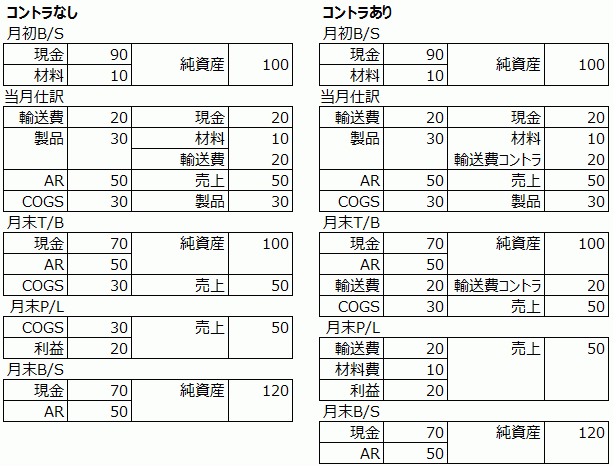When managing on-board inventory or inventory with invoices yet to arrive in a business system, assets are recorded under the Goods in Transit account when the ship departs from the exporting country. For goods shipped for consignment sales, they are recorded in the Consigned Goods account. In Indonesia, all such items are treated as Goods in Transit, and liabilities are recorded in a temporary payables account. Accounting System in Indonesia The cloudification of accounting systems is advancing in Indonesia, with the three major local cloud systemsAccurate, Zahir, and Jurnalleading the market. However, in reality, it is said that fewer than 8% of domestic companies have implemented accounting systems. This is why new cloud-based accounting systems continue to be launched in what might seem like an already saturated Indonesian market. It suggests that both domestic and international IT startups see significant potential for cloud accounting systems to expand their market share locally. In Indonesia, automated journal entries due to the widespread use of accounting systems have become commonplace, and over the ... 続きを見る

In Imports, Invoices Arrive Before the Cargo
For imports from overseas, the invoice typically arrives first, followed by the cargo later. However, a production management system cannot register invoices for goods that have not yet been received.
Thus, invoices for goods not yet received are recorded from the accounts payable (A/P) module of the accounting system. At this point, the automatically generated journal entry records the cargo in transit under the Goods in Transit account.
- (Debit) Good-In-Transit (Credit) A/P Trade
When the cargo arrives in the following month or later, receipt processing and invoice registration are performed in the production management system, and the receipt data is interfaced with the accounting system.
The interface system checks the invoice registration history in the accounting system’s A/P module based on the receipt data from the production management system. If the invoice is already registered, it generates a journal entry to transfer Goods in Transit to Goods and registers it in the accounting system’s general ledger (G/L).
- (Debit) Goods (Credit) Good-In-Transit
Final settlement processing is conducted as usual through the A/P clearing function in the accounting system.
Cases Where Invoices Arrive Late in Domestic Transactions
If the invoice arrives within the same month as the goods from the supplier, standard receipt processing and invoice registration are performed.
The interface system checks the invoice registration history in the accounting system’s A/P module based on the receipt data from the production management system. If the invoice is registered, it is recorded in the accounting system’s A/P.
- (Debit) Goods (Credit) A/P Trade
However, it becomes complicated when the invoice arrives in the following month.
Since the received materials are to be immediately warehoused and used, receipt processing is naturally performed. However, for monthly closing purposes, invoice registration must occur in the same month as the receipt in the system.
Additionally, for cost accounting, materials received and immediately used should be reflected in the current month’s manufacturing costs. Therefore, even if the invoice has not arrived by month-end, a temporary invoice must be registered to complete the closing process and reflect it in the costs.
- (Debit) Purchase Expense (Credit) A/P-In-Transit (A/P Accrued)
Upon invoice arrival, the transitional account A/P Accrued is transferred to A/P.
- (Debit) A/P-In-Transit (A/P Accrued) (Credit) A/P Trade
A typical example of a transitional account (something that becomes an expense or revenue over time) is accrued expenses. However, since A/P-In-Transit (A/P Accrued) is not an expense, it is challenging to assign an appropriate translation such as unrealized payables, prepaid receivables, or temporary payables.
Construction in Progress and Work in Process Accounts
Construction in Progress is a temporary account used to manage advance payments or prepayments for construction costs, material costs, labor costs, and expenses incurred until the completion of construction or delivery of a tangible fixed asset.
For example, when importing factory equipment from Japan under an FOB (Free on Board) contract, it becomes the company’s asset at the point of departure. However, subsequent costs such as freight charges, customs duties (Bea Masuk) listed in the PIB (Import Declaration Form), taxes like PPh21, and SPPB (Customs Clearance Approval) fees—collectively CIF (Cost, Insurance, and Freight) costs—are incurred later. Until the amount is finalized, it is recorded in Construction in Progress rather than directly as a fixed asset.
However, Construction in Progress is typically limited to "fixed assets intended for internal use." Fixed assets under construction intended for sale are distinguished as Cost of Uncompleted Contracts, though this distinction is rare in Indonesia.
For inventory assets intended for future sale, they are recorded in the Work in Process (WIP) account.
- (Debit) Construction in Progress (Credit) Checking Account
- (Debit) Tangible Fixed Assets (Credit) Construction in Progress
Inventory Transfer and Inventory Reclassification
In ERP package systems designed for non-manufacturing industries, inventory transfer processing is often available, but inventory reclassification processing is not. This becomes a constraint when applying such systems to manufacturing industries.
In manufacturing, purchased goods undergo various processes, transforming into finished products before shipment. When materials are transferred to a subcontractor (subcon) and change into work in process, fulfilling this requirement with a non-manufacturing system linked to an accounting module presents the following constraints:
- Inventory transfers cannot assign project codes for cost management (because no expense is incurred).
- Inventory transfers cannot change item codes in inventory management (because it’s only a location change).
The requirement to assign project codes during the transfer of materials (R/M) to a subcontractor and manage them as Work in Process (WIP) by project involves generating automatic journal entries during inventory transfer and managing them by project in the general ledger (G/L).
However, since inventory transfers are premised on not incurring expenses in the system, it is impossible to assign project codes and accumulate costs in the Work in Process account (an asset account transferred to COGS upon invoice issuance).
To assign project codes during the physical transfer to a subcontractor, manage costs by project in the ledger, and change item codes, inventory reclassification must generate both issuance and receipt records as a set. However, since this is a two-step process (issuance and receipt), the transfer is performed with the following two entries:
- (Debit) Temporary (Credit) R/M
- (Debit) WIP (Credit) Temporary
If the project code is already determined when purchased goods are received, they can be recorded in the materials account by project at receipt. By assigning project codes in the ledger, cost management by project becomes possible.
Since materials are linked to a project code upon receipt, the remaining issue is determining the timing of their conversion to Work in Process in inventory management.
In reality, however, it is rare for the internal use, such as project codes or product groups, to be finalized at the time of material purchase. While possible with serial number management, it is common for the purpose to be determined during the issuance and receipt process.
Timing of Expense and Revenue Recognition
In a business system, the timing of expense (or revenue) recognition occurs in the following four instances:
- At invoice issuance (increase in assets, increase in sales)
- At material consumption (R/M Usage) (increase in cost of sales, decrease in assets)
- At invoice receipt (increase in expenses later transferred to cost of sales, increase in liabilities)
- At other expense recognition (increase in expenses, increase in liabilities)
Project codes can be assigned at the timing when these expenses (or revenues) are recognized.
If project codes cannot be assigned during inventory transfer (because no expense is recognized), cost management of direct material costs by project cannot be performed until shipment.
During subcontractor manufacturing, only factory overhead (FOH) and labor costs incurred during the period can be managed. The complete cost management table, including direct material costs, is finalized only at shipment.
Additional material costs incurred by the subcontractor can be assigned project codes upon invoice arrival from the subcontractor and transferred to cost of sales.
- (Debit) Expense Work 100 (Credit) A/P 100
- (Debit) COGS 100 (Credit) Expense Work 100
- (Debit) Shipping Clearing 100 (Credit) Inv. Item 100
- (Debit) A/R 100 (Credit) Sales 100
- (Debit) COGS 80 (Credit) Shipping Clearing 80
Offset Processing with Contra Accounts
Transportation costs and other expenses are also assigned project codes and accumulated in Work in Process. Upon sales recognition, the accumulated Work in Process is transferred to cost of sales.
- (Debit) Biaya Transportasi 100 (Credit) Petty Cash 100
As shown above, at the transaction point, an entry increasing expenses and decreasing assets is generated. However, this expense should be reflected in Work in Process and eventually in future cost of sales.
In other words, the recognition of the expense simultaneously increases the valuation of Work in Process.
- (Debit) WIP 100 (Credit) Transportasi Payable 100
A Contra Account offsets a specific account. In this case, Biaya Transportasi (expense) is transferred to Work in Process using a Temporary Account (P/L account). Since the balance of Biaya Transportasi remains in the trial balance (T/B), it can be directly included in the P/L.
Without a Contra Account like a Temporary Account, detailed P/L statements cannot be generated from the T/B.

Representative examples of Contra Accounts include Allowance for Doubtful Accounts and Accumulated Depreciation. By indirectly reducing assets with these negative asset accounts, the A/R amount matching the invoice amount can be managed, and the acquisition cost of fixed assets is maintained while the net amount after deduction is reflected on the B/S.
- (Debit) Provision for Doubtful Accounts (Increase in Expense) (Credit) Allowance for Doubtful Accounts (Decrease in Assets)
- (Debit) Depreciation Expense for Equipment (Increase in Expense) (Credit) Accumulated Depreciation for Equipment (Decrease in Assets)
Methods of Allocating Expenses to Projects
Direct material costs are automatically managed in the ledger with project codes as the key each time they are issued. However, labor costs and factory overhead are allocated to projects at the point when the amounts are determined (e.g., month-end).
Labor costs are recorded against projects based on "hourly rate × working hours" set in the employee master data. However, since only one standard hourly rate can be set, increases in rates for holiday work or overtime must be manually adjusted at the time of cost recognition.
- (Debit) Salaries 200,000 (Credit) Bank 200,000
- (Debit) WIP 200,000 (Credit) Payroll Payable (Contra A/C) 200,000
Labor costs also require a Contra Account to be allocated to Work in Process.
When determining product costs during the month using standard costs for labor and expenses, an adjustment entry for the difference between actual and standard costs is required at month-end.
Impact of Construction Projects on Cash Flow
In Indonesian factories, it is common for invoice issuance to become possible about a week after product shipment, once the customer completes their inspection report. However, for long-term construction projects, even if split billing is possible under the percentage-of-completion method, the gap between shipment (service provision) and invoice issuance can span several months.
This results in a situation where order registration is complete, but sales are not recorded, causing a backlog of orders to accumulate. Since it does not become sales (revenue), no profit is reflected on the P/L. You might find yourself resentfully staring at a P/L deep in the red, thinking, "If only we could issue the invoice a month from now…"
Regardless of profit, fixed costs are incurred at a nearly constant amount each month. To avoid borrowing for fixed cost payments as much as possible, management pressures sales to expedite invoice issuance. Sales then secures permission for split billing from the customer and breathes a sigh of relief.
The Aging Report for receivables and payables is critical for management because it allows them to forecast future cash flow. However, a large order backlog makes it difficult to accurately track cash flow movements, necessitating a mechanism to input invoice issuance schedules at the order registration stage in some cases.



